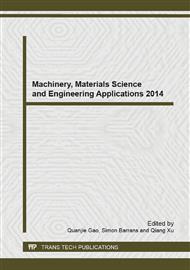p.275
p.280
p.284
p.289
p.295
p.300
p.306
p.311
p.316
Conformal s-Shaped Inlet Design and Flow Field Characteristics of Flying Wing Unmanned Aerial Vehicle
Abstract:
According to the stealth and conformal requirement of flying wing UAV(Unmanned Aerial Vehicle),an dorsal subsonic S-shaped inlet with long diffuser and large offset is designed. In the light of the characteristics of the inlet, new area distribution is created. In the study, the model with power system and the other model whose pipeline connected are established. The coupled numerical simulation is also carried out on the inflow/outflow integrated for flying wing UAV, and it is applied to study the longitudinal aerodynamic performance of UAV and the flow characteristics of inlet under different flight conditions. Results indicate: The longitudinal aerodynamic performance of the model with power system is close to the model with pipeline connected, but the moment characteristic of the former is better; The inlet characteristics are similar when Ma=0.5 and Ma=0.6; As the mach number increasing, the inlet performance decreases rapidly, Especially at the Ma = 0.7, there is a large low-pressure dominated region at the small angle of attack α = 2°, which leads to the total pressure recovery coefficient decreasing rapidly and the flow distortion increasing obviously.
Info:
Periodical:
Pages:
295-299
Citation:
Online since:
June 2014
Authors:
Price:
Сopyright:
© 2014 Trans Tech Publications Ltd. All Rights Reserved
Share:
Citation:


